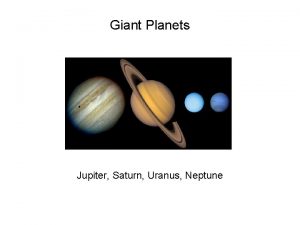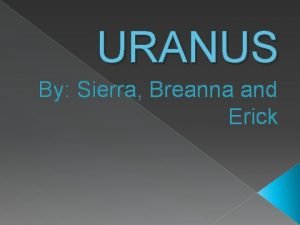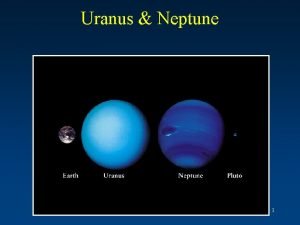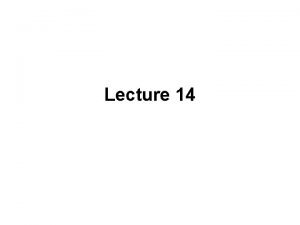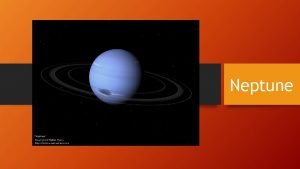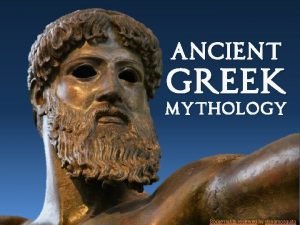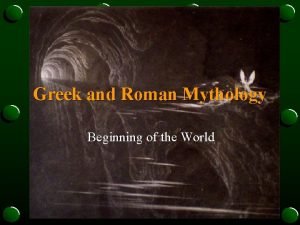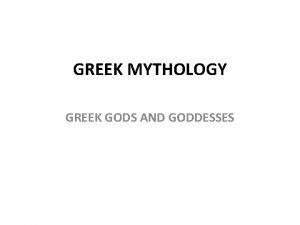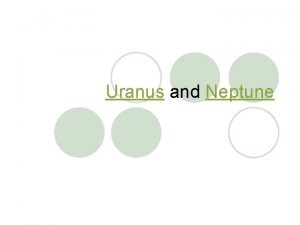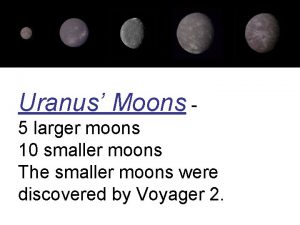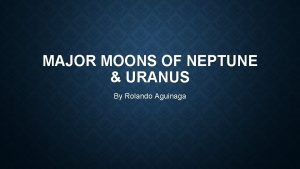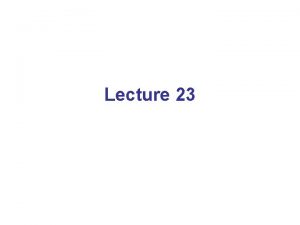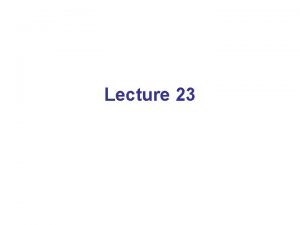URANUS AND NEPTUNE THE MAJOR MOONS Lauren Westhoff







- Slides: 7

URANUS AND NEPTUNE: THE MAJOR MOONS Lauren Westhoff

URANUS’S LARGEST MOON Uranus has 27 different moons. Some of it’s largest moons, in order from largest to smallest is, Titania, Miranda, and Ariel. Titania- Titania was discovered on January 11 th, 1787 by British astronomer William Herschel. Titania's discovery revealed signs that the moon was geologically active. The moon is about 1, 600 km in diameter. The grey color of Titania is typical of most of the significant Uranian moons. If the diameter of Titania is about 1, 600 km then what is its radius?

URANUS’S 2 ND AND 4 TH LARGEST MOONS Ariel- Ariel was discovered October 24 th, 1851 by William Lassell. Ariel is the fourth largest moon of Uranus. It is the youngest of all the moons. It has water, ice, silicate rock, and traces of carbon dioxide. Ariel has the brightest surface of 5 of the largest moons, and reflects more light as well. Ariel has a diameter of 1. 15 X 10 km. (bottom right) Miranda- Miranda is 500 km in diameter, it's only one-seventh as large as Earth's moon, a size that seems unlikely to support much tectonic activity. Miranda was discovered in telescopic photos of the Uranian system by Gerard P. Kuiper on February 16 th, 1948. it, like most of Uranus’s larger moons, consist mostly of roughly equal amounts of water ice and silicate rock. Unlike the other four main Uranian satellites, Miranda's orbit is slightly inclined. (bottom left) How many years apart were the discoveries of Ariel and Miranda?

NEPTUNE’S LARGEST MOON Neptune has 13 moons total. Three of Neptune’s moons are Triton, Proteus, and Neso. Triton- Triton was discovered on October 10 th, 1846 by British astronomer William Lassell, just 17 days after Neptune itself was discovered by German astronomers Johann Gottfried Galle and Heinrich Louis d'Arrest. Triton is the largest of all Neptune’s moons. It is interesting and unusual because it is the only large moon in our solar system that orbits in the opposite direction of a planets rotation, which is retrograde motion. Triton has a diameter of 2, 700 km. Triton consists of a crust of frozen nitrogen over an icy mantle believed to cover a core of rock and metal. It is more dense than any other satellite in our solar system. What direction does Triton orbit? And what is retrograde motion?

NEPTUNE’S MOONS: PROTEUS & NESO Proteus: Proteus was discovered in 1989 by the Voyager 2 spacecraft. The moon has an odd boxlike. About every 27 hours Proteus orbits Neptune. It is irregularly shaped but has no geological modifications. if Proteus just had a little more mass then it could transform into a sphere. It is one of the largest moons but is smaller than Titon. (left) Neso- Neso was discovered in 2002 by Matthew J. Holman, John J. Kavelaars, Tommy Grav, Wesley C. Fraser, and Dan Milisavljevic using the 4 -m Blanco telescope at Cerro Tololo Observatory in Chile. Very little is known about Neso. It is another irregularly shaped moon that Neptune has. This moon has the most distance from its planet than any other moon in our solor system. Neso might be a fragment from a larger moon that split billions of years ago. (right) What do these two moons have in common?

TITANIA VS TRITON Titania and Triton are the largest moons of Uranus and Neptune. Triton is 2700 km in diameter and Titania is 1600 km in diameter. Triton is clearly the bigger moon. Triton reflects 70% of sunlight although Titania is not the brightest moon or Uranus. Titania orbits clockwise around Uranus and Triton orbits counterclockwise around Neptune. Titania was discovered by William Herschel in 1787 and Triton was discovered by William Lassell in 1846 which means they were discovered 59 years apart. These two moons are very different from each other the only thing they have in common is that they are the largest moons for their planet. What are 3 differences between Titania and Trition? Triton moon of Neptune Titania moon of Uranus

SOURCES http: //forcetoknow. com/space/top-10 -largest-moons-solar-system. html http: //solarsystem. nasa. gov/planets/neso/indepth http: //solarsystem. nasa. gov/planets/triton http: //solarsystem. nasa. gov/planets/proteus/indepth http: //solarsystem. nasa. gov/planets/ariel/indepth http: //solarsystem. nasa. gov/planets/miranda/indepth
